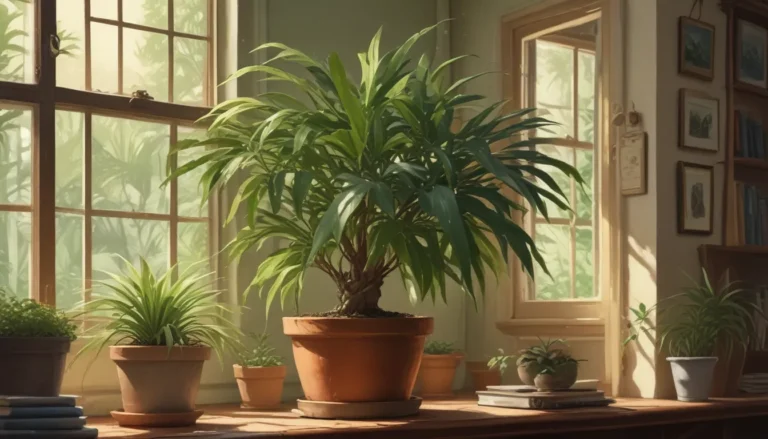The Ultimate Guide to Growing and Caring for Sweet Pea Flowers

Ah, sweet peas. These delicate blooms are not just a favorite in cartoons and TV shows, but also in gardens around the world. Their legendary beauty and sweet fragrance make them a popular choice for many gardeners. In this comprehensive guide, we will delve into everything you need to know about growing and caring for sweet pea flowers.
Getting to Know Sweet Pea Flowers
Before we dive into the nitty-gritty of cultivation and care, let’s take a moment to appreciate the beauty of sweet pea flowers. These annual climbing plants belong to the genus Lathyrus in the Fabaceae family. Native to the Mediterranean region, sweet peas come in a variety of colors, from dark pink to deep purple to vibrant yellow. Their distinctive fragrance, often described as a blend of honey and orange, adds to their charm.
What You’ll Learn
- What Are Sweet Pea Flowers?
- Cultivation and History
- Propagation
- How to Grow: Pinch for More
- Growing Tips
- Pruning and Maintenance
- Cultivars to Select
- Managing Pests and Diseases
- Sweet Pea Quick Reference Growing Chart
- Best Uses
But before you start planting sweet peas in your garden, keep in mind that they are toxic to dogs. Please ensure to plant them in an area where your furry friends cannot easily access them.
Cultivation and History
The history of sweet pea flowers dates back to 1695 when monk and botanist Francisco Cupani discovered them in northwestern Sicily. Since then, these blooms have captured the hearts of gardeners worldwide. Despite their old-fashioned reputation, sweet peas continue to be popular due to their timeless beauty and the introduction of new cultivars.
Propagation
Sweet peas are typically grown from seeds, with many gardeners collecting their own seeds for future plantings. These plants thrive in cool temperatures and require about 50 days from planting to blooming. Starting the seeds indoors or direct sowing outdoors depends on your location and climate. Lightly nicking the seeds with nail clippers can improve germination rates.
Get ‘Em in the Garden
Whether you start your seeds indoors or sow them directly outdoors, sweet peas need a sunny location with well-drained soil. Providing support for the climbing vines is essential, as they can reach heights of up to six feet. Proper spacing and watering are crucial for healthy growth.
How to Grow: Pinch for More
To encourage bushier growth in your sweet peas, consider pinching back the plants. This simple technique involves removing the stem tip and new leaf growth above an established set of leaves. Regular pinching throughout the season can help maintain a compact and bushy shape.
Growing Tips
- Grow sweet peas in cool weather
- Provide full sun to part shade
- Keep the soil moist
Pruning and Maintenance
Deadheading faded flowers and removing emerging seed pods can prolong the blooming season of your sweet peas. Regular fertilization with a high-potash feed or compost tea will keep your plants healthy and flowering.
Cultivars to Select
With a wide range of cultivars available, choosing the right sweet pea variety can be overwhelming. Consider options like the Royal Family Mix, High Scent, Old Spice Mix, or Little Sweetheart, depending on your preferences and garden space.
Managing Pests and Diseases
While sweet peas are relatively low-maintenance, they may encounter a few pests and diseases. Keep an eye out for aphids, caterpillars, leafminers, and mildew. Implementing preventive measures such as diatomaceous earth, traps, or neem oil can help protect your plants.
Best Uses
Sweet peas are versatile plants that can be grown as climbing vines or in hanging baskets. Their vibrant colors and fragrant blooms make them a delightful addition to any garden. Consider planting them along fences, walls, or trellises, or in containers for a pop of color.
Sweet Pea Quick Reference Growing Chart
For a quick overview of key information about sweet pea flowers, refer to our handy reference chart below:
- Plant Type: Annual, flowering vine
- Flower Color: Various
- Native to: Mediterranean region
- Maintenance: Moderate
- Hardiness (USDA Zone): 2-11
- Tolerance: Deer, rabbits
- Bloom Time: Late winter-early summer
- Soil Type: Rich, organic
- Exposure: Full sun to part shade
- Spacing: 6 feet
- Water Needs: Moderate
- Pests & Diseases: Aphids, caterpillars, mildew
- Attracts: Bees, butterflies
Vintage but Relevant
In a world of ever-changing trends, sweet peas remain a timeless favorite among gardeners. Their elegance, fragrance, and vibrant colors continue to enchant garden enthusiasts of all ages. By providing them with the right growing conditions and care, you can enjoy weeks of beautiful blooms in your garden.
Have you cultivated sweet peas in your garden? Share your experiences and insights in the comments below. Let us know what you love most about these charming flowering plants.
For more gardening inspiration, check out our other articles on delightful plants to add to your garden.
By following these tips and guidelines, you can successfully grow and care for sweet pea flowers in your garden. With their stunning blooms and captivating fragrance, sweet peas are sure to become a favorite in your garden. Happy gardening!





